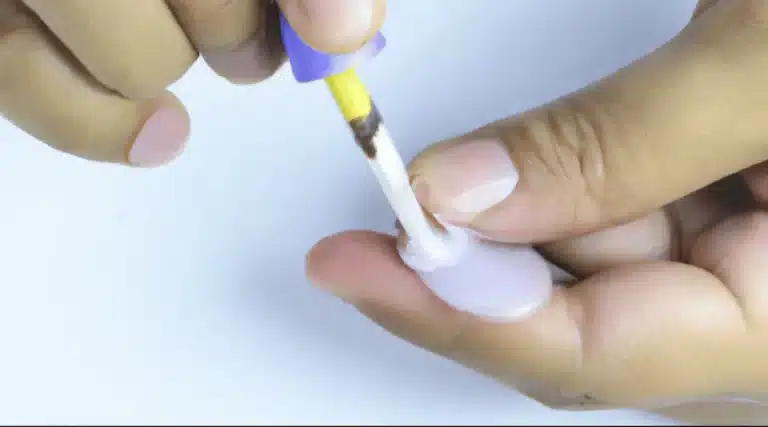Synthetic adhesive is a type of adhesive that is created using synthetic chemicals. It is widely used in various industries, including construction, packaging, and automotive, due to its ability to provide strong bonding properties and versatility.
However, synthetic adhesive also has its share of pros and cons, which are important to consider before using it for any application. In this article, we will explore the different aspects of synthetic adhesive, including its uses, advantages, and disadvantages.
We will also provide safety precautions that should be taken when using synthetic adhesive to prevent any mishaps. By the end of this article, you will have a better understanding of what synthetic adhesive is, and whether it is the right choice for your particular application.
Understanding Synthetic Adhesive
An objective analysis of the characteristics and properties of modern adhesives reveals the potential for their widespread use in various industries and applications, and highlights the importance of understanding their composition and behavior.
Synthetic adhesives are one type of adhesive that is manufactured through a specific process. The manufacturing process involves combining various chemicals to create a product that is suitable for bonding different materials. The chemical composition of synthetic adhesives varies based on the intended use and the materials being bonded.
Synthetic adhesives have become increasingly popular due to their versatility, durability, and strength. They can be used in a variety of applications, including automotive, construction, and electronics.
Understanding the properties and behavior of synthetic adhesives is important in ensuring that they are used effectively and safely.
With this in mind, let us explore the various uses of synthetic adhesive.
Uses of Synthetic Adhesive
This versatile substance has found a multitude of applications in various industries and sectors due to its strong bonding properties. Synthetic adhesives are commonly used in industries such as construction, automotive, aerospace, and electronics. They can be applied using various techniques such as spraying, rolling, brushing, or injection. Popular brands include 3M, Gorilla, and Loctite.
Some common uses of synthetic adhesives include bonding metals, plastics, wood, and ceramics. They are also used in the production of laminates, composites, and coatings. The use of synthetic adhesives has revolutionized modern manufacturing processes, as they offer strong and durable bonds that can withstand various environmental conditions.
With the versatility of this adhesive, it has become an essential component in many industries. The advantages of synthetic adhesive will be discussed in the subsequent section.
Advantages of Synthetic Adhesive
Synthetic adhesives have become an essential component in a wide range of industrial, commercial, and domestic applications due to their numerous advantages.
One of the most significant benefits of synthetic adhesives is their superior bonding strength, which makes them highly reliable in joining different materials.
Additionally, synthetic adhesives are versatile, and they can be used to bond a wide range of materials, including metals, plastics, and wood.
Moreover, synthetic adhesives offer excellent resistance to water, heat, and chemicals, making them suitable for use in harsh environments.
Superior Bonding Strength
With exceptional bonding strength, the effectiveness of synthetic adhesives in joining materials has been extensively researched and proven to be a reliable alternative to conventional bonding techniques. These adhesives have a number of advantages over traditional adhesive applications.
Here are four reasons why synthetic adhesives are superior in terms of bonding strength:
1) They can bond dissimilar materials, such as metals and plastics, with ease.
2) They provide a more uniform distribution of stress across the entire bonded surface, resulting in a stronger bond.
3) They can be formulated to bond to specific substrates, making them ideal for a wide range of applications.
4) They offer a longer working time than some other bonding methods, allowing for more precise application.
The versatility of synthetic adhesives is further enhanced by their ability to bond to a wide range of materials, making them ideal for use in a variety of applications.
Versatility
The versatility of modern bonding techniques has been extensively researched and proven to offer a reliable alternative to traditional bonding methods, allowing for a wider range of materials to be bonded effectively.
Synthetic adhesives have found numerous applications in the automotive, aerospace, construction, and electronics industries, among others. They are used to bond materials such as metals, plastics, wood, ceramics, and composites, providing a strong and long-lasting bond.
However, despite their many advantages, synthetic adhesives also have limitations, such as their inability to bond certain materials, and their vulnerability to degradation under certain environmental conditions.
Nonetheless, with proper application and maintenance, synthetic adhesives remain an important tool for modern manufacturing.
Resistance to water, heat, and chemicals are among the factors that make synthetic adhesives particularly useful for bonding applications, and will be discussed in the subsequent section.
Resistance to Water, Heat, and Chemicals
Bonding techniques are required to withstand harsh environmental conditions, such as water, heat, and chemicals, as they can compromise the integrity of the bond, much like how a weak link in a chain can break the entire chain.
Synthetic adhesives are known for their chemical resistance, durability, moisture resistance, and high temperature tolerance. These properties make them ideal for use in a variety of industries, including aerospace, automotive, and construction.
In the aerospace industry, for example, synthetic adhesives are used to bond composites that need to withstand extreme temperatures and high levels of stress. However, these properties also have their limitations, such as the potential for the adhesive to break down over time.
This will be discussed further in the subsequent section on the disadvantages of synthetic adhesive.
Disadvantages of Synthetic Adhesive
Limitations and drawbacks of synthetic adhesives can be observed, which can hinder their effectiveness in certain applications. One major disadvantage is the potential hazards associated with the use of these adhesives. They often contain harmful chemicals that can pose health risks to users if not handled properly.
Additionally, some synthetic adhesives may emit toxic fumes during application, which can be harmful if inhaled. Another drawback is that synthetic adhesives can be less environmentally friendly than their natural counterparts. They may not biodegrade, leading to potential pollution of the environment.
Finally, alternatives to synthetic adhesives, such as mechanical fasteners or natural adhesives, may be more appropriate for certain applications. It is important to consider all of these factors when choosing a bonding agent. Safety precautions when using synthetic adhesives must also be taken into account to ensure the health and well-being of both the user and the environment.
Safety Precautions when Using Synthetic Adhesive
When using synthetic adhesive, it is important to take proper safety precautions to prevent harm to oneself and others.
This includes proper handling and storage of the adhesive, wearing protective gear such as gloves and goggles, and ensuring proper disposal of any excess or unused adhesive.
By following these guidelines, the risk of accidents or injury can be greatly reduced, making for a safer and more efficient use of synthetic adhesive.
Proper Handling and Storage
Ensuring proper handling and storage of synthetic adhesive is crucial to its bonding capabilities and the success of any project utilizing it.
Proper handling includes ensuring the adhesive is not exposed to extreme temperatures or direct sunlight, as these can affect the quality of the material.
It is also important to store the adhesive in its original container and keep it tightly sealed when not in use.
In addition, it should be kept away from any sources of heat or sparks, as it is highly flammable.
Storage precautions involve keeping the adhesive in a cool, dry, and well-ventilated area.
Failure to adhere to these precautions can result in reduced bonding capabilities and even pose a safety hazard.
Moving forward, the next step is to ensure that proper protective gear is worn when handling synthetic adhesive.
Protective Gear
The use of protective gear is an important precaution to take when handling synthetic adhesives, as it can help prevent potential safety hazards and ensure the success of the project.
Safety measures should be taken seriously to avoid any accidents while working with synthetic adhesives. Recommended equipment includes gloves, masks, and eye protection.
Gloves should be made of nitrile or neoprene to prevent skin contact with the adhesive. Masks should have a respirator filter to avoid inhaling any harmful fumes. Eye protection is necessary to avoid any splashes or spills that may cause eye irritation or damage.
It is important to note that proper disposal of any leftover adhesives is equally crucial and should be done according to the manufacturer’s instructions. Taking the necessary precautions and following the recommended guidelines can help ensure a safe and successful outcome when working with synthetic adhesives.
Disposal
Proper disposal of the leftover materials is crucial in maintaining a safe and clean workspace, preventing any potential harm to both individuals and the environment. Waste management is an important consideration when using synthetic adhesive, as improper disposal can lead to environmental issues and health hazards.
Here are some tips for managing waste effectively:
1) Store leftover adhesive in airtight containers to prevent it from drying out and becoming unusable.
2) Follow local regulations for disposing of hazardous waste, as some adhesives may contain chemicals that could be harmful to the environment.
3) Consider using eco-friendly adhesives whenever possible, to reduce their impact on the environment.
By taking these steps, you can ensure that you use synthetic adhesive safely and responsibly. In the next section, we’ll explore whether synthetic adhesive is the right choice for your needs.
Conclusion: Is Synthetic Adhesive Right for You?
Deciding on whether Synthetic Adhesive is suitable for your needs requires careful consideration of its compatibility with your intended application.
It is important to weigh the pros and cons of using synthetic adhesive as well as the cost analysis for it.
While synthetic adhesive offers numerous benefits such as strong bonding, versatility, and durability, it also has its drawbacks such as the potential for toxic fumes and the difficulty of disposal.
Additionally, it may not be cost-effective for smaller scale projects.
Ultimately, the decision to use synthetic adhesive should be based on the specific requirements of the project, as well as the individual’s personal preferences and priorities.
It is important to consider all factors before making a final decision.
Conclusion
Synthetic adhesives are man-made substances that are used to join materials together. They are commonly used in manufacturing, construction, and DIY projects. Some examples of synthetic adhesives include cyanoacrylate (super glue), epoxy, and polyvinyl acetate (PVA) glue.
Synthetic adhesives have many advantages, including their strength, durability, and versatility. They are also available in a wide range of formulations to suit different applications.
The use of synthetic adhesives is not without its drawbacks. They can be toxic if ingested or inhaled, and they may emit harmful fumes during the curing process. Additionally, synthetic adhesives may not be as environmentally friendly as natural adhesives, and they may not be suitable for use on certain materials.
It is important to take appropriate safety precautions when using synthetic adhesives, such as wearing protective gear and working in a well-ventilated area.
In conclusion, the use of synthetic adhesives can be a practical choice for many applications. However, it is important to consider the pros and cons before choosing a specific adhesive for a project. As the adage goes, ‘measure twice, cut once.’ This means that taking the time to carefully consider options before making a decision can save time and resources in the long run. With proper safety precautions and informed decision-making, synthetic adhesives can be a reliable and effective choice for joining materials together.





